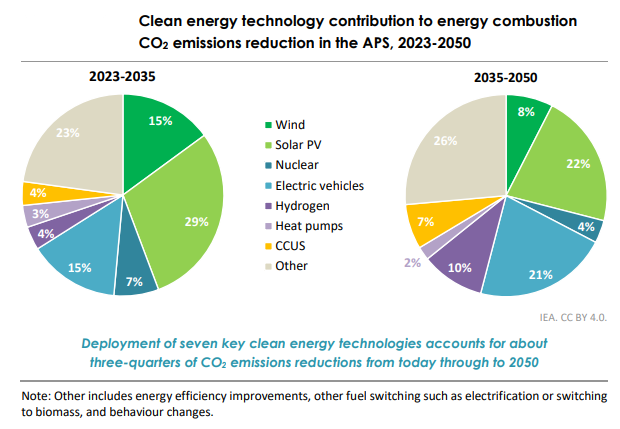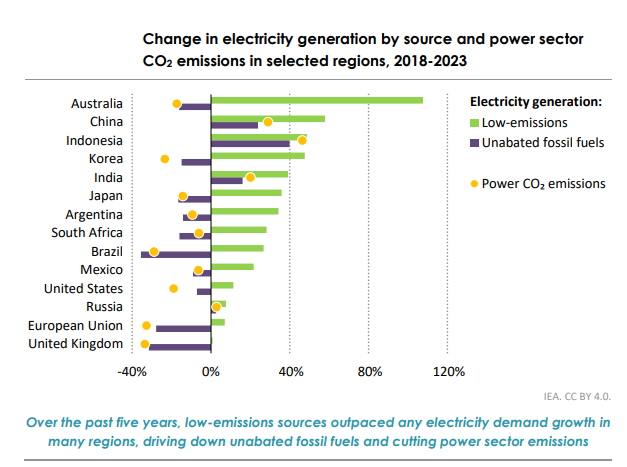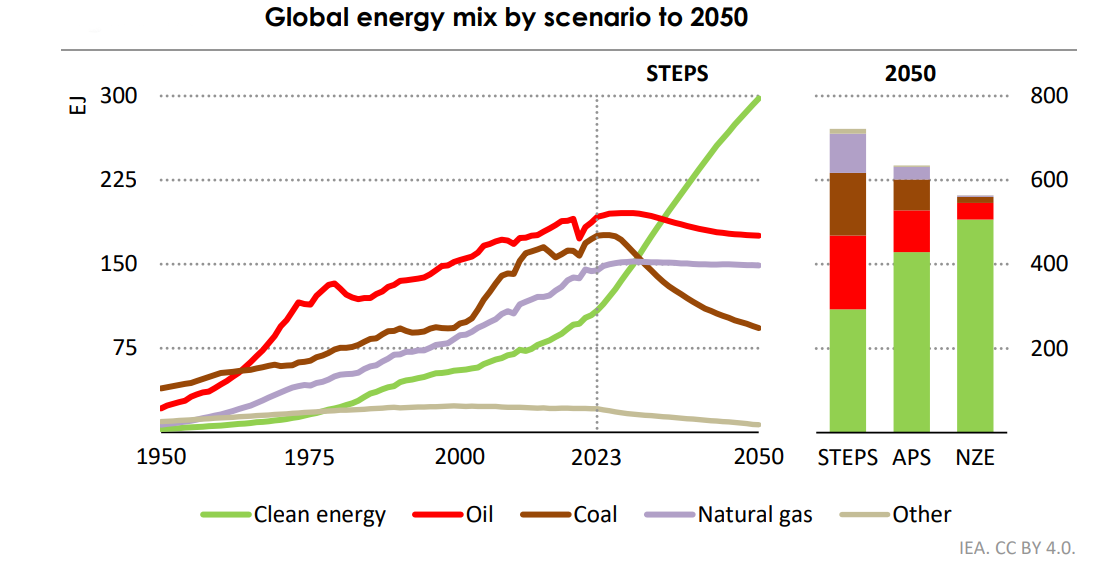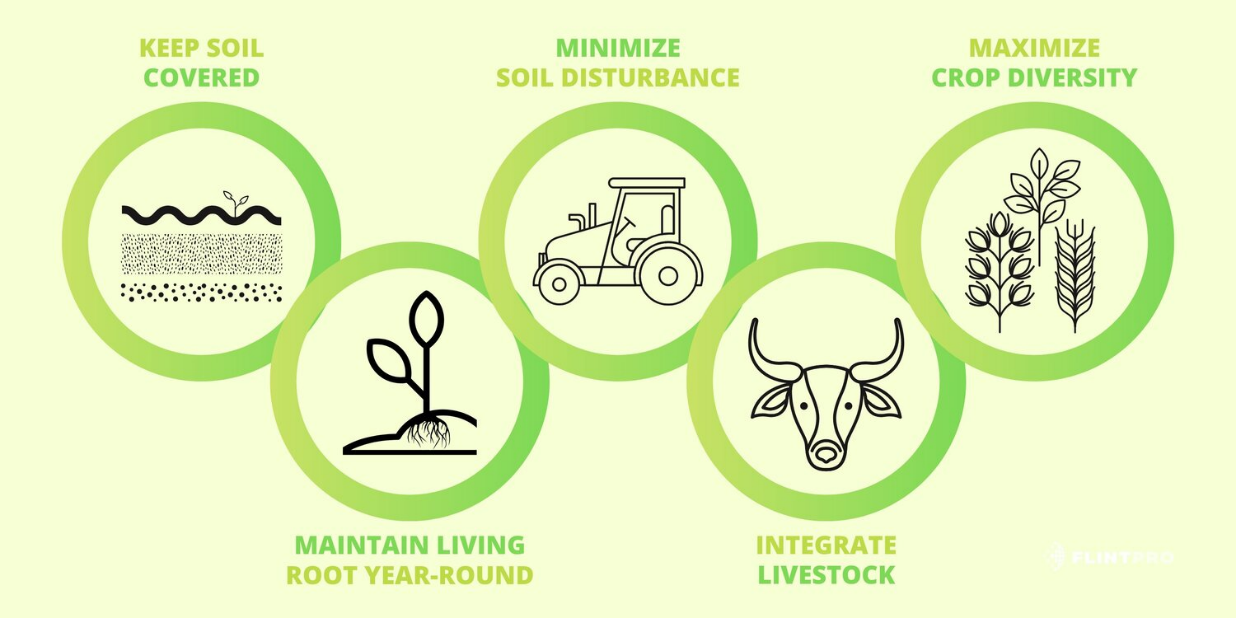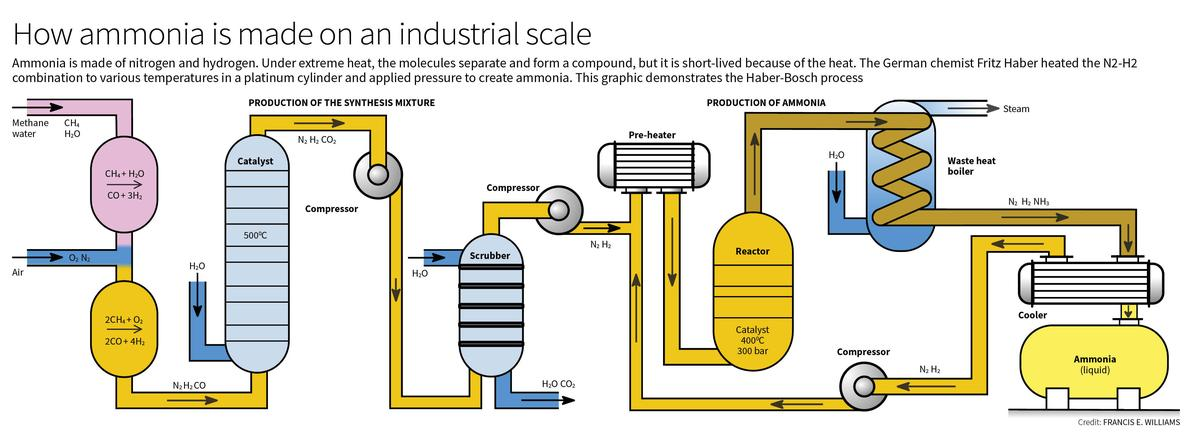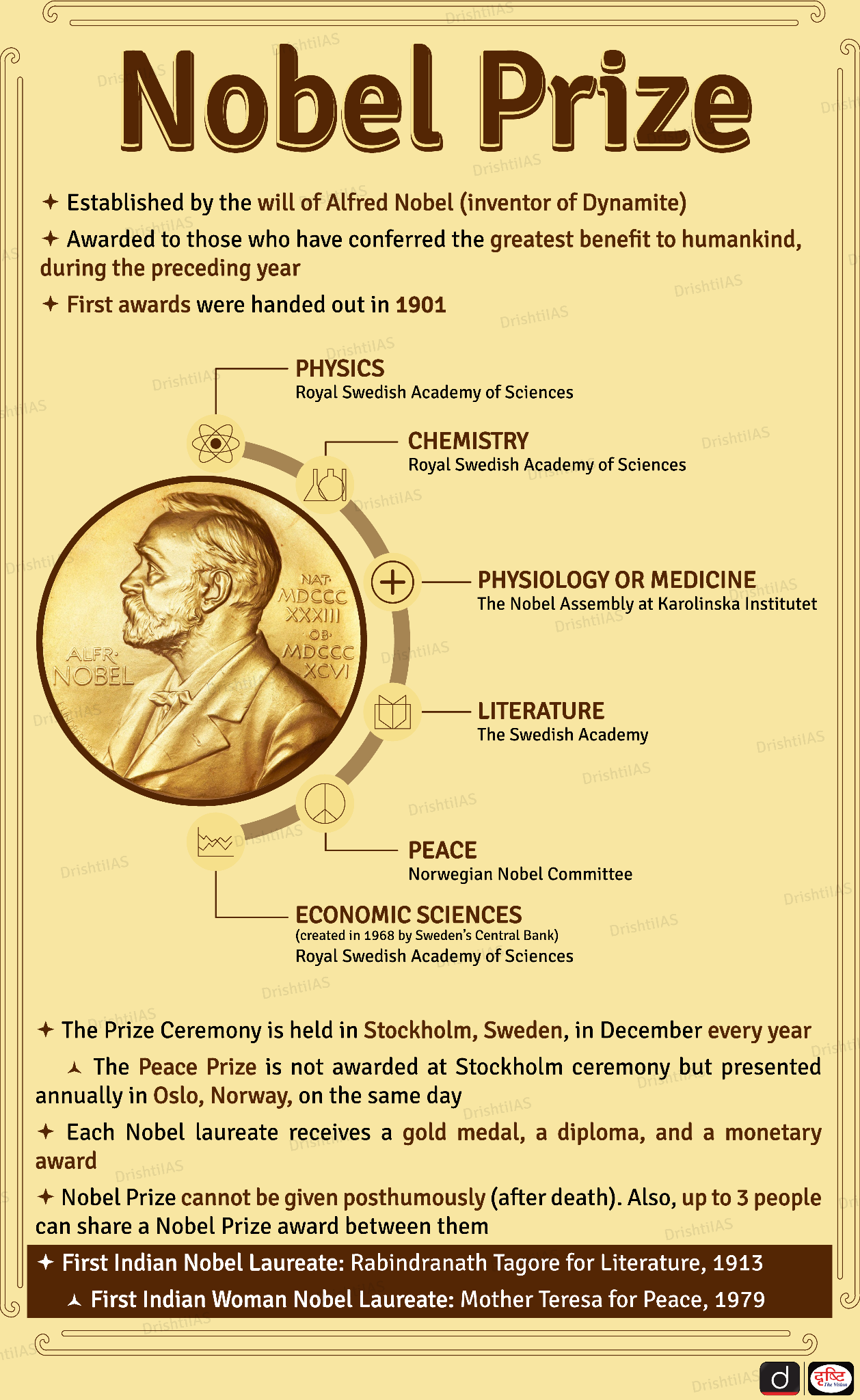Maps
Indian Economy
World Energy Outlook 2024
For Prelims: World Energy Outlook 2024, International Energy Agency, Renewable energy, Supply chain issues, Climate change, Net zero emissions
For Mains: Challenges in the World Energy Outlook 2024, Challenges in India’s Energy Sector
Why in News?
The World Energy Outlook 2024 released by the International Energy Agency (IEA) presents a detailed analysis of global energy trends, focusing on clean energy transitions, rising energy demand, and the impacts of geopolitical conflicts.
- India’s growing energy demand, reliance on coal, and its efforts toward achieving net zero emissions by 2070 are key aspects highlighted in the report.
What is the International Energy Agency (IEA)?
- About:
- The IEA was created in 1974 by member countries of the Organisation for Economic Co-operation and Development (OECD) to help industrialised countries respond to the major 1973-1974 oil crisis.
- Since then, its work has expanded to cover energy security, economic development, and clean energy.
- The IEA is an autonomous forum that provides analysis, data, and policy recommendations to help countries provide secure and sustainable energy.
- The IEA has four main areas of focus: energy security, economic development, environmental awareness, and engagement worldwide.
- Headquartered in Paris, France.
- The IEA was created in 1974 by member countries of the Organisation for Economic Co-operation and Development (OECD) to help industrialised countries respond to the major 1973-1974 oil crisis.
- Members:
- The IEA family is made up of 31 member countries, 13 association countries including India, and 4 accession countries.
- A candidate country to the IEA must be a member country of the OECD.
- The IEA family is made up of 31 member countries, 13 association countries including India, and 4 accession countries.
- Major Publications:
- World Energy Outlook reports.
- India Energy Outlook Report.
- World Energy Investment Report.
- The IEA Technology Roadmap and Policy Pathway series.
- The Annual Energy Efficiency Market Report.
- The Energy Technology Perspectives.
What are the Major Highlights of the World Energy Outlook 2024 Report?
- Geopolitical Tensions and Energy Security: Ongoing conflicts, such as the Russia-Ukraine war and tensions in the Middle East, continue to threaten global energy security.
- Clean Energy Transitions Accelerating: Clean energy investments have reached record highs, particularly in solar and wind power.
- In 2023 alone, over 560 gigawatts (GW) of renewable capacity was added globally, marking a significant leap towards reducing reliance on fossil fuels.
- Global Power Mix Transformation: By 2030, renewable energy is expected to become the dominant source of electricity, surpassing coal, oil, and gas.
- Solar photovoltaic (PV) and wind energy are driving this shift, and low-emission energy sources, including nuclear power, are projected to generate over 50% of the world’s electricity by the end of the decade.
- Oil and Gas Markets Facing a Surplus: The second half of the 2020s is expected to see a surplus in oil and liquefied natural gas (LNG) supply, leading to downward pressure on prices.
- Rising Electric Mobility and Oil Demand Shift: The global electric vehicle (EV) market is rapidly expanding, with EVs expected to account for 50% of new car sales by 2030.
- Clean Energy Technology Competition: The report highlights intense competition among suppliers of clean energy technologies, such as solar PV and battery storage.
- Impact of Climate Change on Energy Systems: The increasingly visible effects of climate change, such as extreme weather events, are adding new challenges to global energy systems.
- Role of Energy Efficiency: Improving energy efficiency is key to cutting emissions, but the report shows that the global target of doubling efficiency by 2030 is unlikely to be met with current policies.
What are the Key Highlights Related to India?
- India’s Economic and Population Surge: India was the fastest-growing major economy in 2023, with a 7.8% growth rate. It’s set to become the world’s third-largest economy by 2028.
- In 2023, India also surpassed China as the most populous country, despite having a fertility rate below the replacement level.
- Surging Energy Demand: India is set to experience the highest increase in energy demand globally over the next decade, driven by rapid economic growth and urbanisation.
- By 2035, total energy demand is expected to rise by nearly 35%, with sectors such as transportation, construction, and manufacturing contributing significantly.
- Strong Coal Dependency: Despite its ambitious renewable energy targets, coal remains a critical part of India’s energy mix.
- By 2030, the country is projected to add nearly 60 GW of coal-fired capacity, with coal continuing to generate more than 30% of India’s electricity, even as solar PV installations expand rapidly.
- Industrial Expansion: India’s industrial sector is poised for major growth by 2035.
- Iron and steel production is expected to rise by 70%, while cement production is projected to increase by 55%.
- Electricity Demand for Cooling: The stock of air conditioners in India is projected to grow more than 4.5 times by 2035, causing electricity demand from cooling to surge.
- The energy required for air conditioning alone in 2035 will exceed Mexico’s total projected electricity consumption for that year.
- Renewable Energy Growth and Storage Capacity: India is making significant progress in expanding its renewable energy portfolio.
- The country is on track to nearly triple its electricity generation capacity to 1,400 GW by 2035.
- Additionally, by 2030, India is set to have the world’s third-largest installed battery storage capacity, crucial for integrating variable renewables like solar and wind.
- Net Zero Emissions Target: India’s goal of achieving net zero emissions by 2070 is a key component of its energy strategy.
- The clean power generation in this trajectory is expected to be 20% higher than current policy projections by 2035.
- Electric mobility and hydrogen usage in industries are set to play a pivotal role in reducing coal and oil consumption, with India’s CO2 emissions projected to be 25% lower by 2035 compared to the Stated Policies Scenario (STEPS).
- Electric Mobility and Oil Demand Peak: The rapid adoption of electric vehicles (EVs) in India will contribute to a peak in oil demand by the 2030s.
- As more EVs hit the roads, oil demand for transport will decline, even though oil use in other areas, such as petrochemicals, will continue to rise.
- Government Policy Support: India’s clean energy ambitions are supported by strong government initiatives like the PM-KUSUM scheme for solar energy in agriculture, the National Solar Mission, and the Production Linked Incentive (PLI) Scheme for manufacturing solar PV modules.
What are the Challenges Highlighted in the Report?
- Geopolitical Risks: Conflicts, like the war in Ukraine, threaten energy security and disrupt global energy supplies.
- Supply Chain Issues: Most clean energy technologies, like solar panels and batteries, are made in a few countries. This concentration creates risks if supplies are disrupted.
- High Financing Costs: It’s becoming more expensive to fund renewable energy projects, especially in developing countries.
- Grid Infrastructure Delays: Many countries lack the grid capacity to handle the fast-growing renewable energy supply, leading to the underuse of solar and wind power.
- Slow Progress on Energy Efficiency: Efforts to improve energy efficiency are not moving fast enough to meet global targets.
- Continued Reliance on Fossil Fuels: Despite the growth in renewables, coal, oil, and gas still dominate energy use, slowing the shift to clean energy.
- Challenges for Developing Countries: Many poorer countries struggle to get the investments needed for clean energy, widening the gap in energy access.
- Impact of Climate Change: Extreme weather events, like heat waves and floods, are putting extra pressure on energy systems, increasing the need for resilience.
Way Forward
- Increase Clean Energy Investments: Governments need to boost funding for renewable energy and grid infrastructure to meet future energy demands and climate goals.
- Governments should make it easier for businesses to invest in clean energy by reducing red tape and offering incentives.
- Diversify Supply Chains: Countries should focus on reducing reliance on a few nations for clean energy technologies by building more local manufacturing capacity.
- Improve Financing for Developing Countries: Easier access to affordable financing is essential for developing economies to grow their renewable energy sectors.
- Expand and Modernise Grid Infrastructure: Investing in smarter, larger grids and energy storage will ensure renewable energy can be fully integrated and used efficiently.
- Accelerate Energy Efficiency Efforts: Stronger policies are needed to improve energy efficiency, which can significantly reduce emissions and energy demand.
- Strengthen Climate Resilience: Energy systems must be prepared to handle the impacts of climate change, such as extreme weather, by improving resilience and adaptability.
|
Drishti Mains Question: Discuss the key challenges highlighted in the World Energy Outlook 2024 regarding the global energy transition. |
UPSC Civil Services Examination, Previous Year Questions (PYQs)
Prelims:
Q1. Consider the following statements: (2019)
- Coal sector was nationalised by the Government of India under Indira Gandhi.
- Now, coal blocks are allocated on lottery basis.
- Till recently, India imported coal to meet the shortages of domestic supply, but now India is self-sufficient in coal production.
Which of the statements given above is/are correct?
(a) 1 only
(b) 2 and 3 only
(c) 3 only
(d) 1, 2 and 3
Ans: (a)
Q2. Which of the following is/are the characteristic/characteristics of Indian coal? (2013)
- High ash content
- Low sulphur content
- Low ash fusion temperature
Select the correct answer using the codes given below:
(a) 1 and 2 only
(b) 2 only
(c) 1 and 3 only
(d) 1, 2 and 3
Ans: (a)
Mains
Q. “In spite of adverse environmental impact, coal mining is still inevitable for development”. Discuss. (2017)


International Relations
Strengthening India-Pakistan Relations and SCO
For Prelims: Shanghai Cooperation Organisation (SCO), TAPI (Turkmenistan-Pakistan-Afghanistan-India), SAARC, Regional Anti-Terrorist Structure (RATS), UN General Assembly, Iran-Pakistan-India (IPI) Pipeline, Shanghai Spirit, SCO-Afghanistan Contact Group, Commonwealth of Independent States (CIS), Association of Southeast Asian Nations (ASEAN), Collective Security Treaty Organization (CSTO).
For Mains: Role of multilateral forums in strengthening India and Pakistan relations and importance of Shanghai Cooperation Organisation (SCO) in it.
Why in News?
Recently, India’s External Affairs Minister had an informal interaction with Pakistan’s Prime Minister and Foreign Minister during the SCO Council of Heads of Government meeting in Islamabad, Pakistan.
- The atmosphere of exchanges has been said to be more positive than in previous encounters.
- The Shanghai cooperation organisation (SCO) Council of Heads of Governments is the second-highest council after the SCO Council of Heads of States.
What were the Positive Developments Between India and Pakistan at the SCO Summit?
- Avoidance of Contentious Language: Both India and Pakistan avoided using contentious language in their national statements.
- There were no direct references to sensitive issues like Kashmir from Pakistan while India avoided specific references to Pakistan while addressing cross-border terrorism.
- Productive Meeting: India commended the Pakistani leadership for organising a productive SCO meeting, signalling a positive tone in his departure remarks.
- Collaboration on Regional Issues: Topics like trade, connectivity, energy flows, and cooperation against terrorism, separatism, and extremism were discussed, with an emphasis on collaboration rather than confrontation.
- TAPI (Turkmenistan-Pakistan-Afghanistan-India) energy pipeline and other issues were discussed with some SCO members.
- Initiatives for Economic Cooperation: The summit resulted in proposals for an Economic Dialogue Programme and strategies to enhance economic cooperation.
- The joint statement emphasised cooperation in areas like green development, digital economy, trade, poverty alleviation, and renewable energy.
Why are Positive Developments Significant?
- Revocation of Article 370 (2019): India’s decision to revoke the special status of Jammu and Kashmir (Article 370) in August 2019 strained already fragile relations.
- Pakistan views this as an illegal annexation, while India considers it an internal matter.
- Downgrade in Bilateral Relations: On 7th August 2019, Pakistan unilaterally downgraded diplomatic relations with India to the chargé d'affaires level and expelled the Indian High Commissioner, in response to India's revocation of Article 370 in Jammu and Kashmir.
- Indus Waters Treaty: Disputes over the Kishanganga and Ratle hydroelectric projects, in particular, have raised tensions, with Pakistan alleging that India is violating the treaty.
- India has formally requested a review and modification of the Indus Waters Treaty (IWT) with Pakistan which has not gone well with Pakistan.
- Limited Trade: After the Pulwama attack in 2019, India revoked Pakistan’s Most Favoured Nation (MFN) status, and Pakistan suspended bilateral trade.
- Revocation of Article 370 led to a halt in bilateral trade. In 2018-19, trade amounted to USD 2.06 billion of exports and USD 0.495 billion of imports.
- Internal Interference: Pakistan has accused India of fomenting unrest in its Balochistan province and supporting separatist movements there.
- India accuses Pakistan of radicalising Kashmiri youth and internationalising Kashmir issue.
How can Multilateral Forums Improve India-Pakistan Relations?
- Neutral Platforms for Dialogue: Multilateral settings like the SCO provide neutral environments for India and Pakistan to engage without the bilateral tensions that usually impede dialogue.
- These forums allow informal conversations and track-two diplomacy (unofficial, non-governmental discussions) which can ease tensions and keep lines of communication open.
- Regional Cooperation: Through SAARC, both nations have previously collaborated on regional trade agreements.
- The potential for cooperation in areas like climate change, disaster management, and public health remains high.
- Security Concerns: Both India and Pakistan are part of the SCO’s Regional Anti-Terrorist Structure (RATS), which aims to promote cooperation on combating terrorism, separatism, and extremism.
- This offers a framework where both countries can work together on common security threats, even if their bilateral relations are strained.
- Reducing Mistrust: UN General Assembly and other international forums involve the participation of several countries, which can act as mediators for constructive dialogue.
- Multilateral diplomacy can ease tensions, as witnessed in the Kargil conflict in 1999, where international pressure played a role in de-escalating the situation.
- Economic Exchanges: Projects like the Turkmenistan-Afghanistan-Pakistan-India (TAPI) Pipeline and Iran-Pakistan-India (IPI) pipeline of mutual benefit can foster cooperation even between adversaries.
What are the Key Facts About SCO?
- About SCO: It is a permanent intergovernmental international organisation founded on 15th June 2001, in Shanghai, China.
- Establishment: It was established by six founding countries namely Kazakhstan, China, Kyrgyzstan, Russia, Tajikistan, and Uzbekistan, evolving from the Shanghai Five mechanism.
- Objectives of the SCO: It aims to strengthen mutual trust among member states, enhance cooperation in various fields, ensure regional peace and stability, and promote a fair international political and economic order.
- Principles of SCO: The SCO adheres to the Shanghai spirit, characterised by mutual trust, mutual benefit, equality, consultation, respect for cultural diversity, and the pursuit of common development.
- Decision-Making Bodies: The SCO's supreme decision-making body is the Council of Heads of States (CHS), which meets annually to address key organisational issues.
- The Council of Heads of Government (CHG) convenes yearly to discuss cooperation strategies, prioritise areas, and approve the budget.
- Standing Bodies: The SCO has two permanent bodies.
- The Secretariat is located in Beijing, responsible for the organisation's day-to-day operations.
- The Executive Committee of the Regional Anti-Terrorist Structure (RATS) in Tashkent, which focuses on regional security and counter-terrorism efforts.
- Current Membership: SCO has 10 full members namely China, Russia, Kazakhstan, Kyrgyzstan, Tajikistan, Uzbekistan, India, Pakistan, Iran (2023) and Belarus (2024).
- SCO-Afghanistan Contact Group: In 2005, the SCO formed the SCO-Afghanistan Contact Group to address security and stability concerns in Afghanistan, demonstrating its commitment to regional security issues.
- Official Languages: The official languages of the SCO are Russian and Chinese, facilitating communication among member states.
- Partnerships and Collaborations: The SCO has developed partnerships with various organisations, including the Commonwealth of Independent States (CIS), Association of Southeast Asian Nations (ASEAN), Collective Security Treaty Organization (CSTO), and multiple United Nations agencies.
Conclusion
The recent informal interactions between India and Pakistan at the SCO meeting, characterised by positive developments and constructive dialogue, highlight the potential of multilateral forums to foster cooperation. By prioritising regional collaboration and addressing common challenges, these platforms can pave the way for improved bilateral relations and stability.
|
Drishti Mains Question: Analyse how multilateral forums can reduce mistrust between India and Pakistan. How can the spirit of the Shanghai Cooperation Organisation (SCO) contribute to this? |
UPSC Civil Services Examination Previous Year’s Question (PYQs)
Mains
Q. Critically examine the aims and objectives of SCO. What importance does it hold for India? (2021)


Agriculture
Looking Beyond Yield in Agriculture
For Prelims: High Yielding, National Family Health Survey (NFHS-5) 2019-2021, Green Revolution, Monoculture Farming, Intercropping, Crop Rotation, Millets, Precision Farming, Organic Agriculture, Agroforestry, Conservation Tillage, Climate-Resistant Crop Varieties, Soil Fertility, Micronutrient.
For Mains: Need for sustainable agriculture in face of diminishing agricultural output and climate change.
Why in News?
There is a need to measure agricultural success by its ability to nourish people, sustain livelihoods, and protect our planet for future generations and not merely emphasising on Yield.
Why are Issues Associated with Sole Focus on Yield in Agriculture?
- Micronutrient Deficiencies: The push for high-yielding rice and wheat varieties has reduced their nutritional content.
- An ICAR study found zinc levels in rice dropped by 33% and iron by 27%, worsening micronutrient deficiencies.
- Public Health Concerns:The decline in nutritional quality of foodgrains is linked to rising health issues.
- The NFHS-5 (2019-2021) highlights that 35.5% Indian children under five are stunted, 19.3% are wasted and 67.1% are anaemic.
- Fertiliser Dependency: The response of crops to fertilisers has declined by over 80% since the 1970s.
- Farmers have to use more fertilisers to achieve the same yield, raising input costs without a proportional increase in income.
- Ignoring Crop Response Across Season: A singular focus on maximising yield may help with seasonal outputs but may not maximise output the whole year round.
- Little regard is paid to the on-field symbiotic relations between crops within and across seasons which compromises overall nutritional output and profit over the year.
- Loss of Biodiversity: Focusing solely on yield structurally promotes only a few high-yielding varieties of seeds everywhere, leading to biodiversity loss.
- For instance, India has lost about 1,04,000 varieties of rice since the Green Revolution and only 6,000 of the older varieties survived.
- It makes the farming system more vulnerable to pests, diseases, and the impacts of climate change.
- For instance, India has lost about 1,04,000 varieties of rice since the Green Revolution and only 6,000 of the older varieties survived.
- Dwindling Agricultural Resilience: Monoculture farming practices are vulnerable to events such as intensifying floods, droughts, and heat waves which has undermined agricultural resilience.
- Many local varieties of crops have proven to be more resilient to extreme conditions.
- Monoculture is the agricultural practice of growing a single crop species over a large area for multiple seasons
- Disruption of Ecological Balance: Monocropping ignores the benefits of intercropping and crop rotations which can diminish long-term agricultural productivity and profitability.
- Intercropping sugarcane with vegetables in Andhra Pradesh improved income stability throughout the year but monocropping ignores this.
- Neglect of Nutritious Crops: The prioritisation of high-yielding rice and wheat varieties has led to the decline of resilient and nutritious crops.
- For instance, the area sown under coarse cereals such as millets has dropped by 10 million hectares since the 1950s, whereas the share of rice and wheat has gone up by 13 million hectares and 21 million hectares, respectively.
- Income Volatility: The reliance on a single crop for high yields can result in economic instability, particularly when crop prices fluctuate or climate conditions reduce yields.
What are Agricultural Indicators?
- Agricultural indicators are measurable variables that provide insights into the health, performance, and sustainability of agricultural systems.
- They help assess various aspects of agriculture, including productivity, economic viability, environmental impact, and social factors.
- Some Key Agricultural Indicators:
- Crop yield: Crop yields refer to the amount of harvested produce per unit of land used for crops.
- Livestock Farming: It is the practice of raising animals for their products. E.g, meat or eggs.
- Input Efficiency: It implies production of high quantity and quality of food, from using only finite resources as inputs E.g., land, water, nutrients, energy etc.
- Soil Health: It involves nutrient availability, oxygen availability to roots, nutrient retention capacity etc that determine how well the soil can function.
- Water Use Efficiency: It refers to the amount of carbon stored as biomass or grain produced for each unit of water used by the crop.
- Nutrition: Agriculture should focus on producing healthy food rich in micronutrients such as iron, zinc, vitamin A, and folate, which are vital for various bodily functions.
- Greenhouse Gas Emissions: Techniques such as precision farming, organic agriculture, agroforestry, and conservation tillage should be adopted that help minimise inputs like fertilisers and fossil fuels, thereby reducing emissions.
- Resilience to Climate Change: Adjusting planting dates, selecting climate-resistant crop varieties and agroforestry can increase agricultural resilience to climate change impacts.
How Looking Beyond Yield Can Improve Agriculture?
- Holistic Development: Agriculture indicators should not be determined only by the Ministry of Agriculture, but collectively by the Ministries of Health, Agriculture, Water, and Environment.
- It will ensure that agricultural policies account for diverse aspects like public health, water management, and environmental conservation.
- Nutritional Security: Transitioning from measuring output in terms of quantity (kg/hectare) to nutritional output per hectare ensures that food production contributes directly to human well-being.
- This addresses critical issues like malnutrition and micronutrient deficiencies by prioritising the quality of food, not just the quantity.
- Soil Health and Biological Activity: Metrics such as soil biological activity and soil organic carbon are vital indicators of long-term soil fertility.
- Maintaining healthy soil ensures sustained productivity without over-reliance on chemical inputs, which degrade soil quality over time. E.g., Soil health cards.
- Water-Use Efficiency: Improving water efficiency helps conserve a critical resource, making agriculture more resilient in the face of climate change.
- Telangana's AI-powered 'Saagu Baagu' pilot demonstrates how technology can optimise irrigation and improve water-use efficiency.
- Crop Diversification: Growing more than one crop in an area ensures that regions don’t become overly dependent on a single crop, reducing vulnerability to pests, diseases, and price fluctuations.
- Landscape Diversity Score should be developed to assess the regional diversity of crops.
- Income Diversification: Crop diversification, combined with income diversification like livestock rearing and intercropping, creates more economically resilient farming systems.
What are Government Initiatives for Sustainable Agriculture?
Conclusion
Shifting from a yield-centric approach to a broader agricultural framework fosters nutritional security, enhances soil and water health, and promotes biodiversity. By integrating diverse indicators and fostering collaboration among ministries, India can create a more resilient and sustainable agricultural system that nourishes people while protecting the environment for future generations.
|
Drishti Mains Question: Discuss the consequences of prioritising yield over nutritional quality in Indian agriculture. How looking beyond yield can improve agriculture?? |
UPSC Civil Services Examination Previous Year Question (PYQ)
Prelims
Q. With reference to ‘Initiative for Nutritional Security through Intensive Millets Promotion’, which of the following statements is/are correct? (2016)
- This initiative aims to demonstrate the improved production and post-harvest technologies, and to demonstrate value addition techniques, in an integrated manner, with cluster approach.
- Poor, small, marginal and tribal farmers have a larger stake in this scheme.
- An important objective of the scheme is to encourage farmers of commercial crops to shift to millet cultivation by offering them free kits of critical inputs of nutrients and micro irrigation equipment.
Select the correct answer using the code given below:
(a) 1 only
(b) 2 and 3 only
(c) 1 and 2 only
(d) 1, 2 and 3
Ans: (c)
Mains
Q.How far is Integrated Farming System (IFS) helpful in sustaining agricultural production? (2019)
Q. Mention the advantages of the cultivation of pulses because of which the year 2016 was declared as the International Year of Pulses by the United Nations. (2017)


Agriculture
Haber-Bosch Process and Production of Fertilizers
For Prelims: Haber-Bosch process, Nitrogen, Ammonia, Lightning, Azotobacter and Rhizobia, Volcanic eruptions, Acid rain, organic farming, biofertilizers.
For Mains: Importance of the Haber-Bosch process, Implications of Using Fertilizers, Nitrogen cycle.
Why in News?
Through the Haber-Bosch process, a hundred million tonnes of nitrogen are extracted from the atmosphere and transformed into fertiliser, resulting in the addition of 165 million tonnes of reactive nitrogen to the soil.
- In comparison, natural biological processes generate an estimated 100-140 million tonnes of reactive nitrogen annually.
What is the Haber-Bosch Process?
- About:
- The Haber-Bosch process is an industrial method for synthesizing ammonia by combining nitrogen from the air with hydrogen, significantly contributing to fertiliser production.
- Process:
- Experimental Setup:
- The reaction occurs in a steel chamber at a pressure of 200 atm, allowing the nitrogen-hydrogen mixture to circulate effectively.
- A specially designed valve withstands high pressure while allowing the N₂-H₂ mixture to flow through.
- Haber implemented a system to transfer heat from the outgoing hot gases to the incoming cooler gases, optimizing energy efficiency.
- Catalyst Development:
- Haber initially experimented with various materials looking for suitable filament materials as Catalyst to speed up reaction.
- Among the tested materials was osmium, which, when placed in the pressure chamber with the N₂-H₂ mixture, successfully cracked the nitrogen triple bond, allowing for ammonia production.
- Uranium was another effective catalyst but both osmium and uranium were too expensive for large-scale applications.
- The search for a more cost-effective catalyst led to the identification of specific iron oxides as viable options.
- Experimental Setup:
- Applications:
- Manufacturing: As a refrigerant in industrial refrigeration systems and air conditioning.
- Household: An ingredient in household cleaning products, including glass and surface cleaners.
- Automotive fuel: An internal combustion engine powered by ammonia is being explored as an alternative propulsion technology.
- Chemicals: A precursor for various chemicals, including nitric acid and explosives.
- Key Milestones:
- In 1913, the German chemical company opened its first ammonia factory, marking a significant milestone in the production of fertilizers.
- Fritz Haber, a German chemist, won the Nobel Prize in Chemistry in 1919 for his work on ammonia synthesis.
What is the Nitrogen Cycle?
- About:
- Plants obtain reactive nitrogen from the soil by absorbing nitrogen-based minerals like ammonium (NH4+) and nitrate (NO3–), dissolved in water.
- Humans and animals rely on plants for nine essential nitrogen-rich amino acids, as nitrogen makes up about 2.6% of the human body.
- After being ingested, nitrogen returns to the soil through excreta and decomposition of dead organisms, but some nitrogen escapes back into the atmosphere as molecular nitrogen, leaving the cycle incomplete.
- Natural Availability of Nitrogen:
- Lightning: Lightning bolts possess enough energy to break the N2 bond, combining nitrogen with oxygen to form nitrogen oxides (NO and NO2).
- These oxides mix with water vapour, forming nitric and nitrous acids, which fall as acid rain, providing reactive nitrogen to the soil.
- Biological Fixation: Some bacteria, like Azotobacter and Rhizobia, can convert atmospheric nitrogen into reactive nitrogen.
- These bacteria often have symbiotic relationships with plants such as legumes or aquatic ferns like Azolla, which enhance nitrogen availability in the soil, making them valuable for agriculture.
- Process of Nitrogen Replenishment:
- While legumes can fix nitrogen naturally, most staple crops like rice, wheat, corn, potatoes, cassava, bananas, and other fruits and vegetables depend on soil nitrogen for growth.
- As human populations grow, the depletion of nitrogen in agricultural soils accelerates, requiring the use of fertilizers to restore soil fertility.
- Historical Fertilization Methods:
- Farmers historically cultivated legumes to naturally replenish nitrogen in the soil or applied ammonia-based fertilizers to increase crop yields.
- They also utilized ammonium-rich minerals from volcanic eruptions and naturally occurring nitrates found in caves and rocks to enhance soil fertility.
- Lightning: Lightning bolts possess enough energy to break the N2 bond, combining nitrogen with oxygen to form nitrogen oxides (NO and NO2).
What is the Impact of Industrial Production of Fertilizers?
- Pros:
- The Haber-Bosch process enabled the mass production of synthetic fertilizers, significantly boosting global food supply during the 20th century, contributing to increased life expectancy.
- An estimated one-third of the world's population relies on food produced using nitrogen fertilizers.
- Without the industrial production of ammonia from nitrogen and hydrogen, it would have been impossible to meet the growing global demand for food.
- Cons:
- Synthetic nitrogen fertilizers, although critical for food production, have adverse environmental impacts.
- Excess nitrogen application leads to plant over-nourishment, boosting bacterial activity and accelerating nitrogen release into the atmosphere.
- This contributes to environmental degradation, including acid rain, land corrosion, and surface water deoxygenation through runoff, causing excessive weed growth in water bodies.
Way Forward
- Promote Sustainable Fertilizer Use: Encourage the adoption of precision agriculture and controlled-release fertilizers to reduce nitrogen waste, minimize environmental damage, and enhance the efficiency of fertilizer usage in farming.
- Invest in Alternative Technologies: Develop and promote eco-friendly alternatives to synthetic fertilizers, such as organic farming practices, nitrogen-fixing crops, and biofertilizers, to mitigate the environmental impacts of chemical fertilizers.
- Strengthen Policy Frameworks: Governments should implement regulations to control fertilizer overuse and incentivize sustainable farming practices, ensuring food security while protecting ecosystems and public health.
- Enhance Global Cooperation: Foster international collaboration to address food distribution disparities, improve access to agricultural innovations, and support capacity-building initiatives for regions facing food insecurity, ensuring equitable solutions to global food challenges.
|
Drishti Mains Question: Critically examine the impact of synthetic fertilizers on agriculture and the environment. Discuss sustainable alternatives to mitigate these challenges. |
UPSC Civil Services Examination, Previous Year Question (PYQ)
Prelims:
Q. With reference to chemical fertilizers in India, consider the following statements: (2020)
- At present, the retail price of chemical fertilizers is market-driven and not administered by the Government.
- Ammonia, which is an input of urea, is produced from natural gas.
- Sulphur, which is a raw material for phosphoric acid fertilizer, is a by-product of oil refineries.
Which of the statements given above is/are correct?
(a) 1 only
(b) 2 and 3 only
(c) 2 only
(d) 1, 2 and 3
Ans: (b)
Mains:
Q. Sikkim is the first ‘Organic State’ in India. What are the ecological and economical benefits of Organic State? (2018)

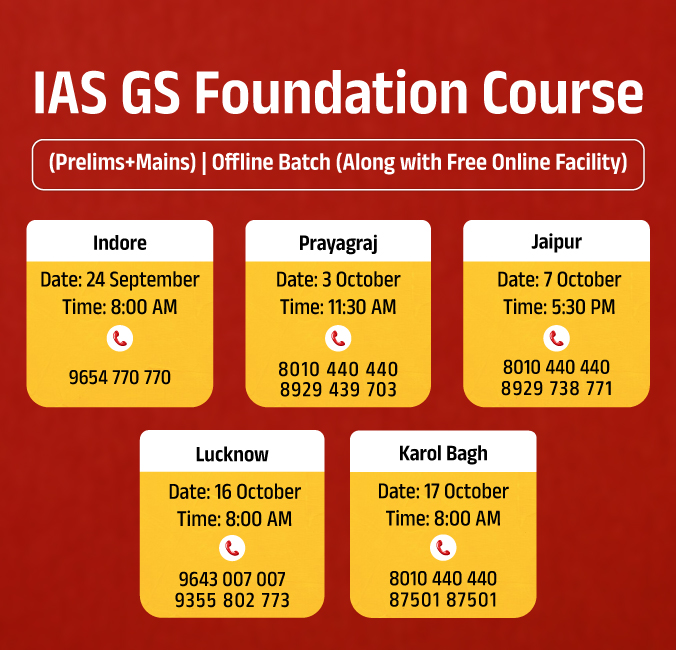
Important Facts For Prelims
Nobel Prize for Economics 2024
Why in News?
The Nobel Prize for Economics 2024 is awarded to Daron Acemoglu, Simon Johnson, and James A. Robinson “for their studies of how institutions are formed and affect prosperity”.
- The modern-day significance of their work in understanding why some countries are wealthy while others remain poor.
- The prize of 11 million krona (USD 1.1 million) will be shared between the recipients in recognition of their contributions.
What are the Key Focus Areas of the Study?
- The research by the three economists explored how different institutional structures, particularly in countries colonised by Europeans, influenced the path to prosperity.
- In regions where Europeans faced high mortality rates, they were less likely to settle and more likely to establish extractive institutions, which often persisted into the modern era.
- The study highlighted that institutional differences, rather than geography or culture, play a decisive role in economic outcomes.
- The example of the divided city of Nogales, where the US side has greater economic opportunities and political rights compared to the Mexican side, illustrated how institutions impact prosperity.
- Nogales is Arizona, on the US-Mexico border. It is directly adjacent to Heroica Nogales, its twin city located in Mexico.
- The two cities are separated by International Avenue, which serves as the border between the two nations.
- The example of the divided city of Nogales, where the US side has greater economic opportunities and political rights compared to the Mexican side, illustrated how institutions impact prosperity.
What are the Key Facts About Winners?
- Simon Johnson:
- He is best known for his time at the International Monetary Fund (IMF) (2007-2008), and currently a professor at the Massachusetts Institute of Technology (MIT).
- Co-authored the book Power and Progress: Our Thousand-Year Struggle Over Technology and Prosperity (2023) with Daron Acemoglu.
- Emphasised that poverty in many countries stems from entrenched political and economic institutional arrangements, making solutions complex and long-term.
- Daron Acemoglu:
- Professor at MIT and a frequent collaborator with Simon Johnson.
- Noted that their work broadly supports democracy, stating that countries transitioning from non-democratic regimes typically see significant economic growth within 8-9 years, but cautioned that democracy is not an easy solution.
- Co-authored Why Nations Fail: The Origins of Power, Prosperity, and Poverty (2012) with James A. Robinson.
- James A. Robinson:
- Professor at the University of Chicago and co-author of Why Nations Fail with Daron Acemoglu.
- Based on their work, he expressed scepticism about China’s ability to maintain economic prosperity under its repressive political system, citing historical examples like the Soviet Union.
- Highlighted that many societies, including the United States, have transitioned into inclusive societies, overcoming past systems of oppression and privilege.
What is the Nobel Prize in Economic Sciences?
- About:
- The prize, formally known as the Sveriges Riksbank Prize in Economic Sciences in Memory of Alfred Nobel, was established in 1968 by the Swedish central bank.
- It complements the annual Nobel Prizes in physics, chemistry, medicine, literature, and peace, which were set up according to Alfred Nobel’s will.
- Other Economics Notable Laureates:
- In 2023, Claudia Goldin received the award for her research on gender pay gaps.
- In 2022, Ben Bernanke, Douglas Diamond, and Philip Dybvig won for their work on banks and financial crises.
- Other notable laureates include Friedrich Hayek for economic theory, William Nordhaus for climate change analysis, and Paul Krugman for trade theory.
- In 2019, Abhijit Banerjee, Esther Duflo, and Michael Kremer were recognized for their work on poverty alleviation.
- Gender disparity in Nobel Prizes:
- The economics prize is the second most male-dominated after physics, with only three female recipients.
- This reflects the historical underrepresentation of women in scientific and economic fields.
Other Nobel Prize 2024
- Literature: South Korean author Han Kang
- Physics: John J. Hopfield and Geoffrey E. Hinton
- Physiology or Medicine: Victor Ambros and Gary Ruvkun
- Chemistry: David Baker, Demis Hassabis and John M. Jumper
UPSC Civil Services Examination, Previous Year Question (PYQ)
Prelims:
Q. Nobel Prize winning scientist James D. Watson is known for his work in which area? (2008)
(a) Metallurgy
(b) Meteorology
(c) Environmental protection
(d) Genetics
Ans: (d)


Important Facts For Prelims
Ossification Test
Why in News?
Recently, one of the individuals accused in the murder case of a political leader underwent an ossification test to determine if he was a minor.
What is the Ossification Test?
- About:
- Ossification is the natural process of bone formation, beginning in the early developmental stage of the fetus and continuing until late adolescence, with variations among individuals.
- A person's approximate age can be estimated based on the stage of development of their bones.
- The test involves taking X-rays of specific bones, such as those in the hands and wrists, to assess skeletal and biological development.
- The X-ray images can be compared to standard development benchmarks to help determine age.
- The analysis may also utilise a scoring system that evaluates individual bones in the hands and wrists, comparing their growth to established maturation standards within a specific population.
- Reliability:
- Variability in observing bone maturation can affect the accuracy of ossification tests.
- Minor developmental differences among individuals create potential for error in age estimation.
- Ossification tests typically provide an age range, such as 17-19 years.
- Courts have addressed the issue of margin of error within this range, debating whether to accept the lower or upper end of the range.
- For example, In 2024, the Delhi High Court ruled that in cases under the POCSO (Protection of Children from Sexual Offences) Act, 2012 the upper age limit of the ossification test's reference range should be considered.
- The court also stated that a margin of error of two years should be applied when determining age.
- For example, In 2024, the Delhi High Court ruled that in cases under the POCSO (Protection of Children from Sexual Offences) Act, 2012 the upper age limit of the ossification test's reference range should be considered.
- Variability in observing bone maturation can affect the accuracy of ossification tests.
- Court’s View About the Test:
- Under Section 94 of the Juvenile Justice Act, if there are "reasonable grounds for doubt" regarding the person’s age, the Board must initiate the process of age determination.
- The primary evidence for age verification should be a school-issued birth certificate or a matriculation certificate from the relevant examination board.
- If these documents are unavailable, a birth certificate from a municipal authority, corporation, or panchayat can be considered.
- The Act states that only in the absence of these documents should an ossification test or another medical age determination test be conducted, as ordered by the Committee or Board.
- In a March 2024 ruling, the Supreme Court emphasized that ossification tests should be used as a last resort for determining age.
- Courts have ruled that ossification tests cannot override documentary evidence.
Why is Age Determination Significant in the Criminal Justice System?
- Criminal law distinguishes between children and adults in terms of procedures, correction, rehabilitation, and punishment.
- In India, individuals below the age of 18 are classified as minors.
- Minors are governed by the Juvenile Justice (Care and Protection of Children) Act, 2015.
- A child in conflict with the law is not sent to an adult prison but is placed in an observation home and appears before a Juvenile Justice Board (JJB), comprising a magistrate and two social workers with expertise in child welfare, rather than a traditional court.
- After conducting an inquiry, the JJB can decide to admonish the child, assign community service, or place them in a special home for a maximum of three years, among other options.
- After Juvenile Justice Amendment Act 2021, for children above 16 apprehended for heinous offences (punishable by at least 7 years' imprisonment), the JJB must conduct a preliminary assessment of their mental and physical capacity to commit the offence.
- The assessment also evaluates the child's understanding of the consequences and the circumstances of the offence to decide whether they should be tried as an adult.
UPSC Civil Services Examination, Previous Year Question (PYQ)
Q. With reference to India, consider the following statements :
- When a prisoner makes out a sufficient case, parole cannot be denied to such prisoner because it becomes a matter of his/her right.
- State Governments have their own Prisoners Release on Parole Rules.
Which of the statements given above is/are correct?
(a) 1 only
(b) 2 only
(c) Both 1 and 2
(d) Neither I nor 2
Ans: (b)


Rapid Fire
Siberian Cranes, Flamingos and Great White Pelicans
Along with Siberian cranes and flamingos, Great white pelicans are increasingly avoiding Indian wetlands due to habitat destruction.
- These birds primarily live in Europe, West Asia, and parts of Africa, migrating to India for warmth during harsh winters.
| Species | About | Protection Status |
| Siberian cranes | This species is mostly found in East Asia, with just a few left in the West and Central regions. |
IUCN Status: Critically Endangered CITES: Appendix I |
| Flamingos | Known for their vibrant pink feathers, flamingos have long legs and necks. |
IUCN Status: Vulnerable: Andean flamingo Near Threatened: Lesser flamingo, Puna flamingo, and Chilean flamingo CITES: Appendix II |
| Great white pelicans |
The adult male is larger than the female. The male pelican has a pink patch of skin around the eyes. |
IUCN Status: Least Concern |
- Challenges in Migration:
- Habitat Destruction: Pollution and encroachment of wetlands hinder their migration.
- Climate Change: Rising temperatures affect their wintering patterns.
- Antibiotic Pollution: The leaking antibiotics into the food webs is also disrupting the natural habitats of these elegant white birds.
Read more: Wetlands


Rapid Fire
Ranthambore Tiger Reserve
The Rajasthan forest department has stopped the illegal construction of a complex within the buffer zone of Ranthambore Tiger Reserve, in Rajasthan.
- Ranthambore Tiger Reserve, housing 71 tigers as per the 2023 census.
- There are 5 Tiger Reserves in Rajasthan namely, Ranthambhore Tiger Reserve, Sariska Tiger Reserve, Mukundara Hills Tiger Reserve, Ramgarh Vishdhari Tiger Reserve, Dhlopur-Karauli Tiger Reserve.
- There are 55 Tiger reserves in India.
- Ranthambore Tiger Reserve comprises the Ranthambore National Park as well as Sawai Mansingh and Keladevi Sanctuaries.
- Madhya Pradesh has the highest tiger population in India, with an estimated 785 tigers.
Read more: Ranthambore Tiger Reserve, International Tiger Day 2023


Rapid Fire
Tracing Roots of Ancient Indians
Recently, the Indian government has undertaken a scientific study using ancient and modern genomics to determine the population history of South Asia.
- Project Name: “Reconstruction of the population history of South Asia using ancient and modern genomics”. It is anticipated to be completed by December 2025.
- Conducting Agency: The study is conducted by the Anthropological Survey of India (AnSI) under the Ministry of Culture, in collaboration with the Birbal Sahni Institute of Palaeosciences, Lucknow.
- Study Mechanism: It will analyse 300 ancient skeletal remains, including teeth, from various archaeological sites in India and Pakistan.
- It will help uncover clues about ancient diets, living conditions, disease prevalence, environmental adaptation, and migration patterns.
- Archaeological Sites Involved: Remains were collected from excavations sites such as Harappa and Mohenjodaro, Burzahom (J&K), Nagarjunakonda (Andhra Pradesh), Maski (Karnataka), Ropar (Punjab) and Lothal (Gujarat).
- They were excavated between 1922 and 1958 by the Archaeological Survey of India and later entrusted to the AnSI, which now serves as their custodian.
Read More: Genome India Project


Rapid Fire
62nd Anniversary of the Battle of Walong
The Indian Army is organising month-long events to mark the 62nd anniversary of the Battle of Walong, which took place during the 1962 war with China.
- The battle saw Indian troops, despite being outnumbered and low on resources, successfully halted the Chinese army's advance for 27 days in the challenging terrain of Kibithu, Walong, and Namti Tri Junction (Tiger’s Mouth).
- The 11 Infantry Brigade, with Kumaon, Sikh, Gorkha, and Dogra regiments, played a key role in defending the area against Chinese forces.
- The battles occurred at 3,000 to 14,000 feet, but 62 years later, improved infrastructure and increased Army strength have changed the situation.
- This year’s commemoration will include several adventure and community activities like White water rafting, motorcycle and bicycle rallies, battlefield and adventure treks, and a half marathon.
- The newly renovated Walong War Memorial and Shaurya Sthal at Lama Spur will be inaugurated.
- Walong Day on 14 November features a wreath-laying ceremony, battle narration, and traditional performances by Mishmi and Meyor dancers.
Read More: India-China Conflict




